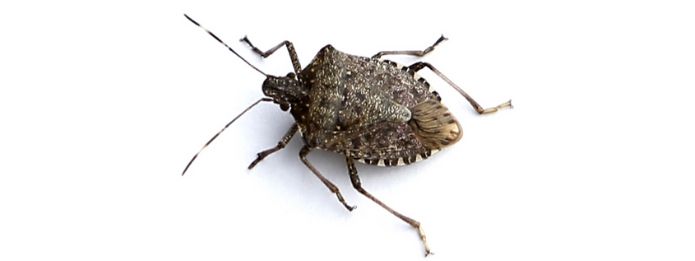 Rodents, bed bugs, fleas, garden pests, and even yellowjacket wasps. You’ve probably heard of all of the usual suspects which keep residential pest control experts busy, but what about stinkbugs? Stinkbugs, specifically the brown marmorated stink bug (BMSB) have been spreading across Ontario and Canada for several years now. They’re more common than you might think, and most people know less about them than their typical pest partners. So what do you do if you find them, indoors or outdoors? How can you prevent them from spreading any further? You may be surprised to find out that certain habits can actually attract stinkbugs to your property. Read on to find out more about what you can do to combat any stinkbug infestation.
Rodents, bed bugs, fleas, garden pests, and even yellowjacket wasps. You’ve probably heard of all of the usual suspects which keep residential pest control experts busy, but what about stinkbugs? Stinkbugs, specifically the brown marmorated stink bug (BMSB) have been spreading across Ontario and Canada for several years now. They’re more common than you might think, and most people know less about them than their typical pest partners. So what do you do if you find them, indoors or outdoors? How can you prevent them from spreading any further? You may be surprised to find out that certain habits can actually attract stinkbugs to your property. Read on to find out more about what you can do to combat any stinkbug infestation.
 Rodents, bed bugs, fleas, garden pests, and even yellowjacket wasps. You’ve probably heard of all of the usual suspects which keep residential pest control experts busy, but what about stinkbugs? Stinkbugs, specifically the brown marmorated stink bug (BMSB) have been spreading across Ontario and Canada for several years now. They’re more common than you might think, and most people know less about them than their typical pest partners. So what do you do if you find them, indoors or outdoors? How can you prevent them from spreading any further? You may be surprised to find out that certain habits can actually attract stinkbugs to your property. Read on to find out more about what you can do to combat any stinkbug infestation.
Rodents, bed bugs, fleas, garden pests, and even yellowjacket wasps. You’ve probably heard of all of the usual suspects which keep residential pest control experts busy, but what about stinkbugs? Stinkbugs, specifically the brown marmorated stink bug (BMSB) have been spreading across Ontario and Canada for several years now. They’re more common than you might think, and most people know less about them than their typical pest partners. So what do you do if you find them, indoors or outdoors? How can you prevent them from spreading any further? You may be surprised to find out that certain habits can actually attract stinkbugs to your property. Read on to find out more about what you can do to combat any stinkbug infestation.

